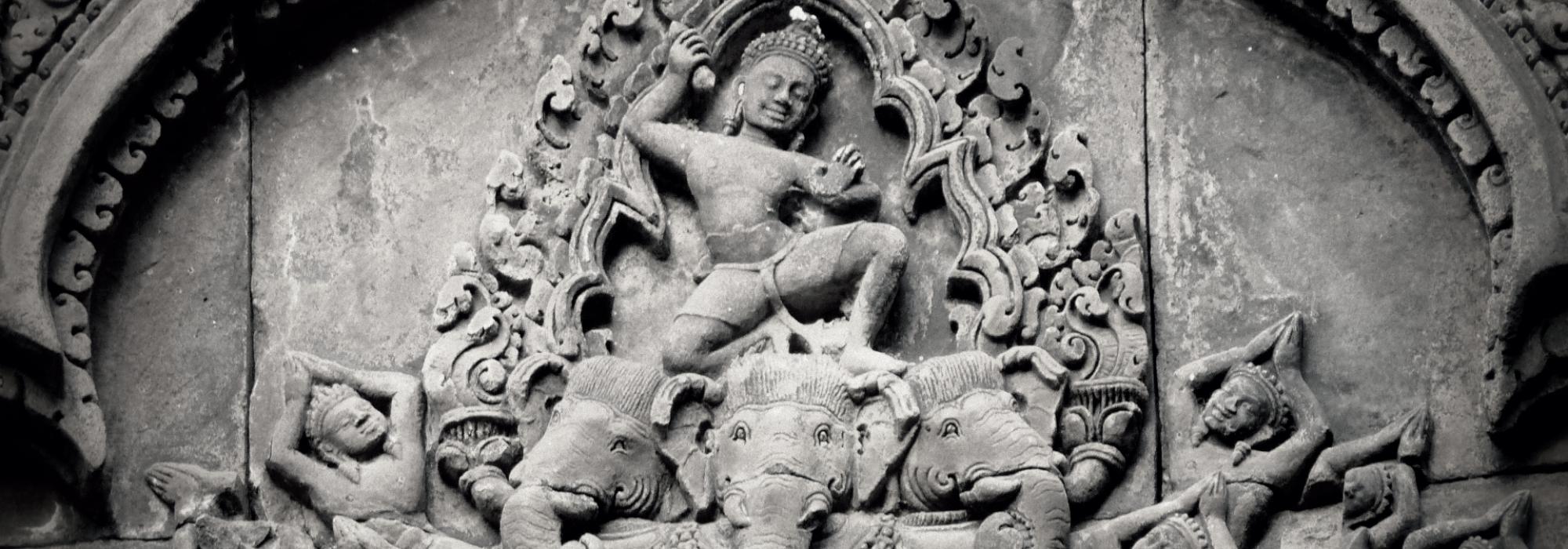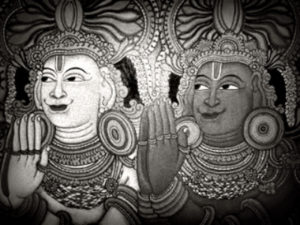The Age of the Vedas: Indra – a great symbol for kshaatra
In the Vedas, Indra has been called Purandara. It means that he is the Indra who destroyed the puras of asuras. The word ‘pura’ can either mean the ‘forts’ of the enemies or their ‘bodies.’ Purandara is used in the sense of one who is capable of destroying the three kinds of shariras – स्थूल, सूक्ष्म, and कारण.
Calling Shiva as a Tripurari also has a similar connotation. The meaning of the word Purandara therefore spans from destroying enemies at a spiritual level all the way to killing at a physical level. He killed Vrtrasura who had captured the water of the whole world. He destroyed all those who were opposed to progress and prosperity; he eliminated all those who wrought troubles on the residents of the world. Daityas like Bala, Paka, Pani, Jambha, Ahi, Namuchi, Shambara, and others were thus destroyed. Indra also has a few privileges. In the soma yajna, Indra has the lion’s share; it is called as ‘प्रयाज’ in the shrauta-mimamsa-shastras. During war, soldiers have special permission to drink alcohol. Our tradition calls it ‘वीरपाण’ (a drink of courage). Valmiki and Vyasa too mention this in their works. Even today, in army camps and colonies, soldiers get alcohol at subsidized rates. This is a privilege they have. One can observe how in those early years itself the Vedas recognize the value in even something like alcohol. To a certain extent alcohol is useful to relieve the physical pain and mental stress that result from war.
We can observe the natural manifestation of Indra. Our tradition has equated Indra with rain, thunder, and lightning. What is the meaning of this? The earth is essential for life of all creatures. After soil, the next is water. Soil can be found everywhere, but water that we can use cannot be found everywhere. Without water, we can’t have life. This is also why the word ‘जीवन’ means both ‘water’ and ‘life.’
And further, a country like India that depends heavily on monsoon, there is a separate season for rains [unlike the West, which has four seasons traditionally, we have six]. We have to wait for the rainy season. After the rainy season, a good stock of water accumulates. Thus, praising Indra for bringing this rain, there is a tradition of celebrating ‘Indra-dhvajotsava’ as a mark of gratitude towards Indra. In the Vedas, Indra has also been a symbol for seasons and for rains. As a counterpart to Indra [the other half, so to speak] to symbolize the essence of braahma, we have Agni, the fire deity. Without fire, our work doesn’t get done. ‘अगं नयति, अग्रे नयति इत्यग्निः’ is the semantic etymology of the word ‘agni’ – ‘he who makes the inanimate animate’ and ‘he who mobilizes the static and leads the laggards.’ Agni is also called the purohita (‘the one who places’). Also, the deity that comes along with Agni, Vayu is also a symbol of kshaatra; he is a kshatriya deity. Thus the pair of braahma-kshaatra go hand in hand.
In the Vedas, different deities have been assigned different varnas. [Agni, Brhaspati, and Prajapati are hailed as the brahmana deities because they symbolize purity, knowledge, and purging of desires. Indra, Varuna, Soma, Rudra, Parjanya, Yama, Mrtyu, and Ishana are hailed as the kshatriya deities because they are all associated with courage, heroism, order, protection, and management. The vasus, rudras, adityas, vishvedevas, and maruts are hailed as the vaishya deities because they are essential for day-to-day sustenance. They are many in number, they are found everywhere, and they fulfill the varied desires of the common people. Pushan is the nourishing solar god. He is hailed as a shudra deity because the fundamental service is nourishment. Pushan is also hailed as the protector of the weak and the powerless.]
Irrespective of their varna, every deity has an element of kshaatra. For instance, the Ashvin twins are vaishya deities but they take the role of kshaatra during peacetime. They are always for the poor and the needy, the helpless and the humble. In them we see kshaatra as a constructive force of sustenance and peace. They also represent the restoration of order.
Translated from Kannada by Hari Ravikumar
(Translator’s notes in square brackets.)


















































